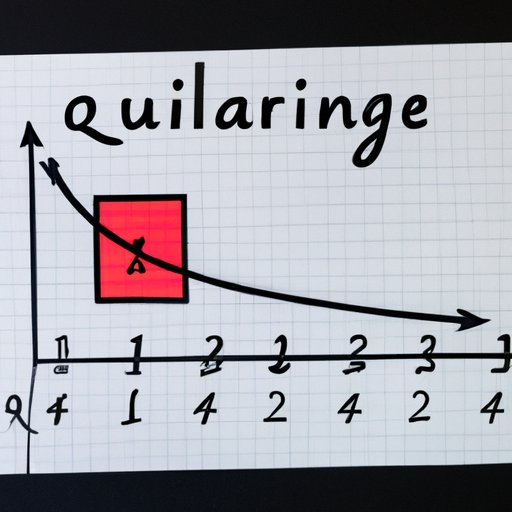
I. Introduction
In the world of statistics, understanding quartile range is key to interpreting and analyzing data. One important component of quartile range is Q1, which represents the first quartile of a data set. While this concept may seem intimidating at first, with a little guidance, anyone can learn how to find Q1 and use it to gain valuable insights from data.
This guide is designed for anyone looking to gain a deeper understanding of Q1, from students studying statistics to professionals working in fields such as healthcare, finance, or market research. We’ll walk you through the basics of statistics, provide a step-by-step guide to finding Q1, and demonstrate its practical applications.
II. Understanding the Basics of Statistics
Before diving in to the specifics of Q1, let’s review some key concepts in statistics.
Median: The median is the middle value in a data set. To find the median, you arrange the data in ascending or descending order and identify the value that falls in the exact middle of the set.
Quartile Range: The quartile range divides a data set into four equal parts, or quartiles. Q1 and Q3 represent the first and third quartiles, respectively, while the difference between Q3 and Q1 is known as the interquartile range.
III. The Step-by-Step Guide to Finding Q1
Now that we’ve laid out the basics, here’s a step-by-step guide to finding Q1.
Step 1 – Order the data set: Before you can find Q1, you need to put the data set in order from lowest to highest or highest to lowest.
Step 2 – Determine the median: Next, find the median of the entire data set. This will be the value that sits exactly in the center of the set.
Step 3 – Identify the lower half of the data set: Once you’ve found the median, separate the data into two halves. The half below the median is the lower half.
Step 4 – Find the median of the lower half: Find the median of the lower half of the data. This number is Q1.
For example, let’s say you have the following data set: 4, 6, 10, 11, 14, 17, 22
First, order the set: 4, 6, 10, 11, 14, 17, 22
Next, find the median. In this case, the median is 11, since it falls directly in the middle of the set.
Separate the data into two halves:
Lower half: 4, 6, 10
Upper half: 14, 17, 22
Find the median of the lower half: Q1 is 6.
IV. Demystifying Q1
At this point, you may be wondering what Q1 actually represents and why it matters. Q1 represents the data value that falls in the 25th percentile of a data set. In other words, 25 percent of the data points fall below Q1.
Q1 is important because it allows us to see the spread of data below the median. By understanding where the first quartile falls, we can gain a more accurate sense of how widely distributed the data is, and where the bulk of the values cluster.
V. Investigating the Spread of Data
Q1 is just one piece of the puzzle when it comes to understanding the spread of data. The interquartile range (IQR), which represents the distance between Q3 and Q1, offers another valuable tool for analyzing variability in a data set.
For example, imagine you run a small business and you want to compare the sales figures from your two most recent fiscal quarters. Using Q1 and the IQR, you can get a better sense of whether sales have been consistent or if there have been significant changes between quarters.
VI. Understanding Statistical Analysis
Q1 does not work alone. Rather, it is just one of many tools used in statistical analysis. In healthcare, for example, Q1 and other measures of variability play a critical role in assessing the effectiveness of treatments and analyzing patient outcomes. In finance, Q1 is used to monitor trends in stock prices and identify patterns in market data.
VII. Conclusion
By understanding how to find Q1, you gain an important tool for analyzing data and making more informed decisions across a variety of industries and fields. Whether you’re a student studying statistics or a professional looking to improve your data analysis skills, it’s essential to have a clear understanding of quartile range and its applications.
So go forth and explore the exciting world of statistics, armed with the knowledge you need to find Q1 and unlock the insights hidden in your data.
Keywords: Q1, quartile range, statistics, data analysis, variability
Description: This guide provides a detailed step-by-step process for finding Q1, the first quartile of a data set, and exploring its applications in fields ranging from healthcare to finance.




